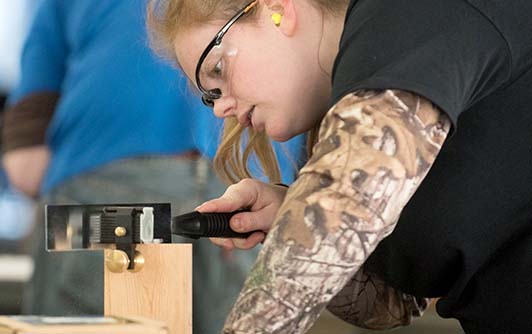Architectural Technology and Design
What is Architectural Technology and Design?
The modern, computer-age version of traditional drafting makes use of architectural CAD. The term CAD stands for Computer Aided Design, a tool which can be used in many adaptations of architectural design. A CAD draftsperson is responsible for developing working drawings, plans, diagrams or layouts based on the sketches, calculations, specification sheets and other data supplied by architects and engineers. These plans describe the size, shape, mechanics and function of structures for the use of construction teams and will be used to prepare detailed blueprints.
A CAD draftsperson must ensure that their drawings conform to precise specifications by using their knowledge of architectural materials, practices and conventions and by closely checking their drawings for errors. CAD has replaced traditional drafting as it is faster, more accurate and allows for simulations while providing all the storage, filing, memory and duplicating advantages of the modern computer. However, draftspersons using CAD still make use of the same knowledge of building construction theory and drafting and design standards traditionally required by this occupation.
Architectural technologists and technicians perform some or all of the following duties:
- Assist in the development of architectural designs
- Analyze building codes, by-laws, space requirements, site requirements and other technical documents and reports
- Prepare manual and CAD (computer-assisted design) drawings, specifications, cost estimates and listings of quantities of material from conceptual drawings and instructions
- Construct architectural and display models, and 3-D virtual models of architectural designs
- Prepare contract and bidding documents
- May supervise drafters, technicians and technologists on the architectural team
- May supervise construction projects and co-ordinate, monitor and inspect work done by others
HOW TO JOIN THE FIELD
Completion of secondary school is usually required.
Completion of a two- to three-year college program in architectural technology or a related subject is usually required.
Certification in architectural technology or in a related field through provincial associations of architectural or engineering/applied science technologists and technicians may be required by employers.
A period of supervised work experience, usually two years, is required before certification.
In Quebec, membership in the regulatory body is required to use the title of Professional Technologist.
INDIGENOUS AND REMOTE CONSIDERATIONS
There may not be many opportunities to work this trade in Indigenous and remote communities. This role might require relocation to larger more urban communities where the equipment is available.
For the digital aspect of the role, many indigenous and remote communities are catching up to southern Canada when it comes to digital technology and computer skills and industries. Not all communities have access to reliable, affordable internet and service interruptions are all too common. Access to computers at home is not a given for everyone and Elders and even sometimes younger generations lack computer knowledge, although this situation is undergoing some significant changes at the moment. But even those people in Indigenous and remote communities with interest and high-level skills in computers may not have the same access to opportunities to learn about different programs and may face significant bandwidth issues, limiting their ability to learn and develop in this field. Indigenous and remote students may need qualifying courses or need to augment college learning to be successful in this field.
Although with significant improvements currently underway to internet connections in Indigenous and remote communities, careers in this field become more viable and are likely to become more so in years to come.
DISABILITY CONSIDERATIONS
Since this job may require sitting at a computer for long periods of time, people with visual disabilities may find it challenging. They may require specialized screens. Also, as it may require sitting for long periods of time, people with certain physical disabilities may struggle as well. Accommodations such as standing desks may make the work more comfortable and ergonomic. However, the fact that this work is digital in nature, may make it attractive to people with mobility disabilities, as they may be able to perform most of the work duties from the comfort of their home. People with learning disabilities may require extra support in post-secondary as well as on the job to ensure their success.
Find the right career path for you with our interactive map!
Trouvez le cheminement de carrière qui vous convient grâce à notre carte interactive!
Sample Job Titles
- Technical Illustrator
- Mechanical draftsperson
- Architectural design technician
Companies and Sectors
- Information Technology companies
- Architectural firms
- Interior design
- Forestry and landscaping
- Urban design

Architectural Technology and Design and the Skills for Success Program
The key Skills for Success for this career path are:
- Numeracy
- Digital
- Creativity & Innovation



